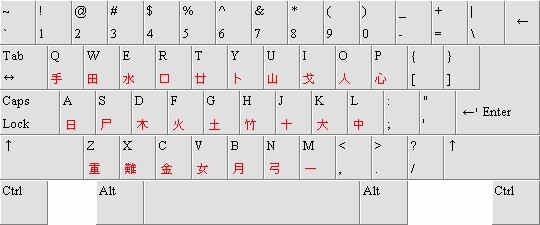Traditional Chinese Cangjie Input Method
The Cangjie input method (sometimes spelt 'Changjie' or 'Cang Jei') is a system by which Chinese characters may be entered into a computer by means of a standard keyboard. Cangjie is based on the graphological aspect of the characters wherein each basic, graphical unit is represented by a basic character component, of which there are 24 in all, each mapped to a particular letter key on a standard QWERTY keyboard. An additional 'difficult character' function is mapped to the X key. Within the keystroke-to-character representations, there also exist four subsections of characters: the Philosophical Set (corresponding to the letters 'A' to 'G' and representing the sun and the moon and the 5 elements), the Strokes Set (corresponding to the letters 'H' to 'N' and representing the brief and subtle strokes), the Body-Related Set (corresponding to the letters 'O' to 'R' and representing various parts of the human anatomy), and the Shapes Set (corresponding to the letters 'S' to 'Y' and representing complex and encompassing character forms). The basic character components in Cangjie are usually called 'radicals'; nevertheless, Cangjie decomposition is not based on traditional Kangxi radicals, nor is it based on standard stroke order; it is in fact a simple geometric decomposition.

Online Tools

